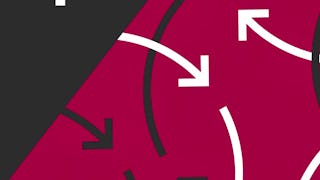Through a combination of video lectures, demonstrations, and hands-on practice, this course will teach learners about the main components of an operating system and how to perform critical tasks like managing software and users and configuring hardware.



Operating Systems and You: Becoming a Power User
This course is part of Google IT Support Professional Certificate

Instructor: Google Career Certificates
643,869 already enrolled
Included with
(29,300 reviews)
Skills you'll gain
- Operating Systems
- Microsoft Windows
- Remote Access Systems
- Systems Administration
- Package and Software Management
- File Management
- Command-Line Interface
- File Systems
- User Accounts
- Windows PowerShell
- Operating System Administration
- Linux
- Linux Administration
- OS Process Management
- Technical Support and Services
- Virtualization
- System Monitoring
Details to know

Add to your LinkedIn profile
18 assignments
See how employees at top companies are mastering in-demand skills

Build your Support and Operations expertise
- Learn new concepts from industry experts
- Gain a foundational understanding of a subject or tool
- Develop job-relevant skills with hands-on projects
- Earn a shareable career certificate from Google

There are 6 modules in this course
Welcome to the Operating Systems course of the IT Support Professional Certificate! In the first module of this course, we will cover the basics of Windows and Linux operating systems (OS). We will learn about how directories and files work in Windows and Linux OS. You will also learn practical ways to manipulate files and directories in the Windows graphical user interface (GUI), Windows command line interface (CLI), and Linux shell. By the end of this module, you will interact with files and directories and perform basic text manipulation in Windows and Linux OS.
What's included
32 videos10 readings3 assignments2 app items1 plugin
In the second module of this course, we'll learn about configuring users and permissions in Windows and Linux OS. As an IT Support Specialist, it's important to know how to grant the appropriate permissions to users and groups for both Windows and Linux OS. By the end of this module, you will know how to add, modify, and remove users for a computer and for specific files and folders by using the Windows GUI, Windows CLI, and Linux shell.
What's included
16 videos7 readings2 assignments2 app items
In the third module of this course, we'll learn about package and software management in Windows and Linux OS. It's important to know how package installs work and how devices and drivers are managed within these operating systems. We will also learn about different packaging and file compression methods. By the end of this module, you will know how to create, update, and remove software by using the Windows GUI, Windows CLI and Linux shell.
What's included
16 videos20 readings4 assignments2 app items
In the fourth module of this course, we'll learn about how filesystems work for Windows and Linux OS. We'll learn about filesystem types and why they're different for certain OS. We'll learn about disk partitioning and virtual memory and why these are so important for an IT Support Specialist's role. We'll also cover ways mount and unmount filesystems, read disk usage, and repair filesystems. By the end of this module, you will partition and format a disk drive yourself in both Windows and Linux.
What's included
16 videos12 readings2 assignments2 app items
In the fifth module of this course, we'll explore process management. As an IT Support Specialist, it is important to use system tools to read and understand process statuses of machines. We will cover ways to start and terminate a process in Windows and Linux. We will also apply troubleshooting tools to solve problems with processes and resources. By the end of this module, you will use Windows and Linux commands to do practical process maintenance.
What's included
14 videos11 readings4 assignments2 app items
Congratulations, you've made it to the final module in the course! In the last module of this course, we will cover some of the practical aspects of operating systems that you'll use all the time in IT Support. We will cover remote access and how to troubleshoot a computer from afar. We'll explore virtualization tools to manage and remove virtual instances, use logs for system monitoring, and show you a few different techniques for OS deployment. By the end of this module, you will apply all the skills from this course to debug some issues within Windows and Linux OS. Good luck!
What's included
16 videos14 readings3 assignments2 app items
Earn a career certificate
Add this credential to your LinkedIn profile, resume, or CV. Share it on social media and in your performance review.
Instructor

Offered by
Explore more from Support and Operations
Why people choose Coursera for their career




Learner reviews
29,300 reviews
- 5 stars
77.88%
- 4 stars
16.52%
- 3 stars
3.68%
- 2 stars
1%
- 1 star
0.90%
Showing 3 of 29300
Reviewed on Mar 23, 2018
Excellent advice on carving it in a stone and being too stubborn to quit. So much of what is seen is sugar coated instasnap filtered that hearing Leverage your Strengths and work hard is reassuring.
Reviewed on Apr 1, 2019
This is my most favorite module module, especially the Linux, which is my all time favorite OS ever enjoy learning, working Programing, and configuring, and will continue enjoying til the end of time.
Reviewed on Nov 27, 2021
Great course, lots of very challenging and useful information. You'll learn about Linux and some of the inner workings of Windows, plus lots of tools and programs that are really useful. Great course!

Open new doors with Coursera Plus
Unlimited access to 10,000+ world-class courses, hands-on projects, and job-ready certificate programs - all included in your subscription
Advance your career with an online degree
Earn a degree from world-class universities - 100% online
Join over 3,400 global companies that choose Coursera for Business
Upskill your employees to excel in the digital economy
Frequently asked questions
To access the course materials, assignments and to earn a Certificate, you will need to purchase the Certificate experience when you enroll in a course. You can try a Free Trial instead, or apply for Financial Aid. The course may offer 'Full Course, No Certificate' instead. This option lets you see all course materials, submit required assessments, and get a final grade. This also means that you will not be able to purchase a Certificate experience.
When you enroll in the course, you get access to all of the courses in the Certificate, and you earn a certificate when you complete the work. Your electronic Certificate will be added to your Accomplishments page - from there, you can print your Certificate or add it to your LinkedIn profile.
More questions
Financial aid available,




